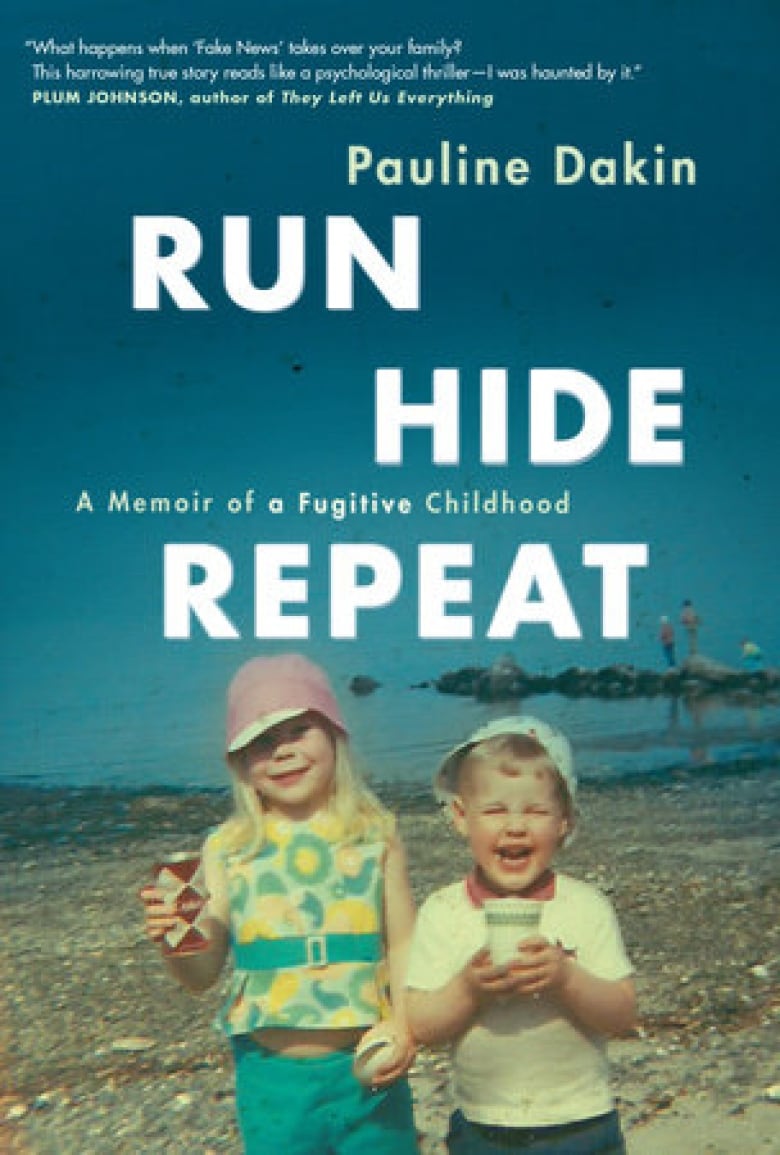This author believed her family was fleeing the Mafia. Then she uncovered the real story
'In that moment, I just knew — the whole thing is a lie,' Dakin reflects on unraveling her family's story

Originally published on September 7, 2017.
Pauline Dakin spent her childhood living on the run with no explanation.
Twice, without any notice, her mother moved her and her brother across the country, wrenching them from their daily lives.
Then in 1988, when the former CBC journalist was 23, she met her mother and a longtime family friend, Stan Sears — a father figure to Dakin — at the Blue Bird Motel, in Sussex, N.B.

Their secret was finally revealed: they were running from the Mafia and had been since Dakin was little.
According to her mother and Sears, they were being protected by a shadowy, secret, anti-organized crime group, funded by the Canadian government, responsible only to the Privy Council.
"My first reaction was you're crazy. This is crazy, " said Dakin, author of Run, Hide, Repeat: A Memoir of a Fugitive Childhood.
'Two people I could most trust in my life'
But her thinking changed in the following days.
"They had been the two people I could most trust in my life. They were always there for me ... and they never once in my life let me down," Dakin told The Current's Anna Maria Tremonti.
"And I thought, 'Wow, you know, if I can't believe these two people of all people, the game is over anyway. What's the point of anything?"
After the revelation, Dakin's life was turned upside down.

'Difficult to live a normal life'
At the time, she was living with a boyfriend but couldn't tell him or any of her friends, leaving her feeling isolated and afraid.
Dakin considered moving to a community that her mother and Sears told her about called the "Place of Hope," a secret community of ex-mobsters and people needing protection in B.C., akin to an extreme version of the witness protection program.
"It was definitely desperation. I just found it so difficult to live a normal life when I knew or was always being told about all these other things going around me ... I thought, 'What the hell? I'm going inside.'"
But this didn't happen — none of what Dakin had been told that day at the Blue Bird Motel was true.
The discovery
Inconsistencies about the story started to crop up and Dakin grew suspicious.
One day, she called her mother to tell her there had been a break-in. Her mother hung up, saying she needed to consult with Sears.
"She calls back and she said, 'Yes, we we know about that break-in. There were two people. We've picked them up down the street in a car. The car had your pictures in the back. They'd been watching you.'"
In that moment, I just knew — the whole thing is a lie.- Pauline Dakin
But there was no break-in. Dakin lied to her mother, hoping to use her response to find the truth.
"In that moment, I just knew — the whole thing is a lie," Dakin said. "Our whole lives are a lie."
"It was excruciating."
Why did Stan lie?
Dakin didn't think that her mother could have lied to them for so long. She must have believed the story as well.
Her mother had met Sears during a difficult time, and she credited him with "saving her life."
"He was a gentle guy and he was a good guy," Dakin said. "She had huge admiration for him. That's why my mother believed it."
Dakin still saw Sears as a father figure and couldn't understand why he would do this to their family.
"I knew that he loved me, I loved him — why?"
She lived with those questions for years, until she stumbled across an article in a medical journal.
"This article talked about an under-diagnosed, under-recognized, under-studied condition — that's quite rare — called delusional disorder," she said.
"If they are intelligent people, they can build entire worlds," she told Tremonti. "And it's kept in kind of an envelope, so they can live very normal looking lives."
The more she read about the condition, the more it seemed to fit Sears's behaviour. She explained the case to several experts — all of whom agreed with her inkling — though Sears was never formally diagnosed.
Her mother died believing the story, but Dakin said Sears believed it, too.
"He never thought he was manipulating people. It's a very bizarre thing," she said.
"People can make things up to support a story, and not feel that they're making it up."
Living with the story, she and her brother often felt alone, and "ripped away" from people around them. Writing the book has helped her to process that, she said.
"The discovery about delusional disorder has allowed me to forgive the people who harmed me because I know it was not malevolent or intentional."
This segment was produced by The Current's Willow Smith.
Correction: Our story initially said Pauline Dakin met her mother and Stan Sears at the Blue Bird Motel in 1983. In fact, the meeting occurred in 1988.